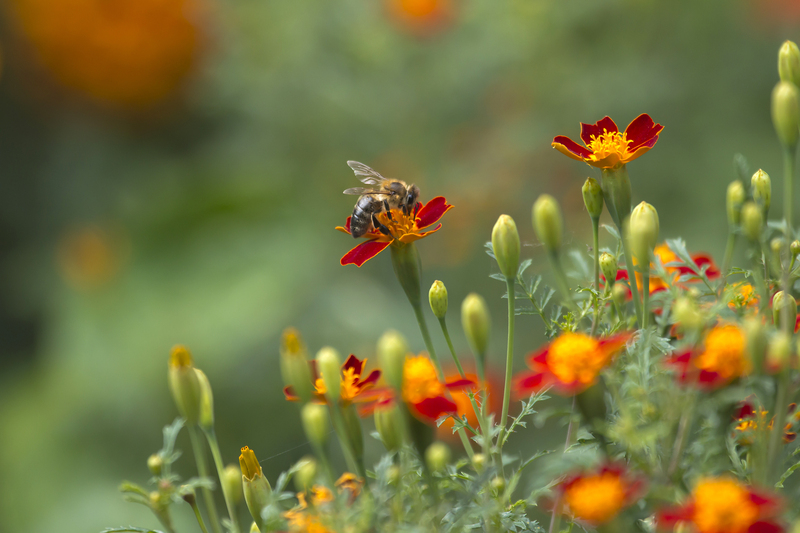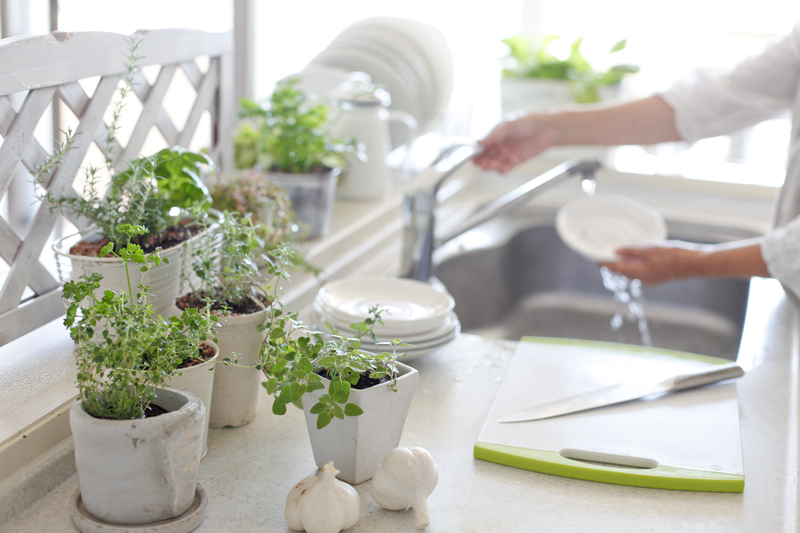Ensure Your Plants Thrive in Cold Months with These Tips
Posted on 25/05/2025
Ensure Your Plants Thrive in Cold Months with These Tips
When the temperatures drop and daylight fades, your beloved garden and houseplants may need a little extra help to keep flourishing. Ensuring plants thrive during cold months can be challenging, but with the right knowledge and care, it's possible for your greenery to survive--and even prosper--through winter. Whether you're caring for outdoor perennials or nurturing indoor houseplants, following proven strategies can make all the difference. In this guide, you'll find practical, research-backed tips to protect your plants through winter, ensuring they emerge healthy and strong come spring.
Why Are Cold Months Challenging for Plants?
Plants face various stresses during colder months, including reduced sunlight, freezing temperatures, dry air, and decreased activity. Outdoor plants contend with frost, snow, and wind, while houseplants struggle against heated, low-humidity indoor environments. Understanding the specific challenges can help you formulate an effective winter plant care plan.
- Lower light intensity can halt photosynthesis and growth.
- Freezing or fluctuating temperatures risk damaging plant tissues and roots.
- Indoor heating systems dry the air, making it hard for tropical plants to retain moisture.
- Watering mistakes (too much or too little) can be fatal during dormancy.

Proven Tips to Help Your Plants Survive & Thrive in Cold Months
1. Choose the Right Plants for Your Climate
The foundation of successful winter plant care is selecting plant species known for cold hardiness. If you live in a region with harsh winters, opt for native or cold-tolerant varieties. These will naturally withstand cold temperatures better and often require less intervention.
2. Prepare Outdoor Plants for Winter Dormancy
Outdoor plants naturally slow down or go dormant during winter. Helping them enter and survive this phase is vital.
- Stop fertilizing in late summer or early fall. New, tender growth is especially vulnerable to frost.
- Gradually reduce watering for perennials and trees as temperatures lower, but ensure soil isn't bone dry when the ground freezes.
- Prune dead or diseased branches to prevent rot and pest problems, but avoid heavy pruning as it may stimulate vulnerable new growth.
3. Mulch Generously for Soil Protection
Mulching is one of the most effective techniques to help plants thrive during winter. Apply a thick layer (2-4 inches) of organic mulch around perennials, shrubs, and trees once the ground begins to freeze.
- Mulch insulates roots against extreme temperature changes and prevents soil from thawing and freezing repeatedly.
- It conserves soil moisture, keeping roots hydrated.
- Mulch breaks down over time to improve soil structure and nutrition.
4. Protect Plants from Extreme Cold and Frost
Ensuring your outdoor plants survive cold months often centers on shielding them from biting winds and sudden frosts. Here's how:
- Cover tender plants with burlap, frost cloth, or old bedsheets on freezing nights. Secure covers to prevent wind from blowing them away.
- Build windbreaks (using stakes and garden fabric) for exposed areas, especially for young trees and sensitive shrubs.
- Group container plants together in sheltered spots close to your home for added warmth.
5. Adjust Your Watering Routine
Plants' water needs can change dramatically during winter.
- Outdoor Plants: Water well before a freeze, so roots can absorb moisture, but avoid waterlogging. In most climates, less frequent, deep watering is best.
- Indoor Plants: Reduce watering frequency, as growth slows. Test soil moisture before watering--roots can easily rot in wet, cold soil.
- Use room temperature water for houseplants to avoid shocking the roots.
6. Maximize Natural Light for Indoor Plants
Light is often the most limiting factor for houseplants during cold months. To ensure your indoor plants thrive in winter:
- Move plants closer to south- or west-facing windows, which receive the most light.
- Clean the windows to maximize sunlight penetration.
- Rotate pots regularly so all sides receive even light.
- Supplement with grow lights for light-hungry species or if your home lacks bright windows.
7. Monitor Humidity Levels Indoors
Indoor heating systems can create dry air that stresses tropical plants, leading to brown leaf tips and poor health. Keep your houseplants thriving in dry winter air with these tips:
- Group plants together to create microclimates with increased humidity.
- Set trays of water near your plants, or use a room humidifier to raise humidity above 40%.
- Mist foliage lightly, but not so much that it encourages mold.
8. Mind the Temperature Indoors and Out
Temperature swings can damage both indoor and outdoor plants. Ensure steady, optimal temperatures for your winter plant care success:
- Keep houseplants away from cold drafts near windows or doors.
- Avoid placing plants near fluctuating heat sources like radiators or vents.
- Monitor night temperatures and adjust thermostat or plant positions as needed, ideally keeping rooms above 60?F (16?C) for most tropical species.
9. Keep an Eye Out for Pests and Diseases
Stressed plants are more vulnerable to infestations. During winter, spiders, aphids, and fungal issues can sneak up on indoor and greenhouse plants.
- Inspect plants regularly for yellowing leaves, sticky residue, or tiny webs.
- Isolate any affected plants to prevent pests spreading to others.
- Treat issues early using natural or chemical solutions suited to the specific pest or disease.
10. Resist the Urge to Over-Fertilize
During the coldest months, most plants enter a state of dormancy or severely slowed growth. Over-fertilizing at this time can burn roots and waste resources. Ensure winter plant health by pausing or reducing feeding until spring signs of new growth appear.
Special Considerations for Different Plant Types
Winterizing Outdoor Perennials and Bulbs
- Cut back dead stems only after frost has killed foliage, so energy returns to the roots.
- Mark plant locations to avoid accidental disturbance during winter clean-up.
- After the ground is frozen, add mulch to insulate perennial crowns and bulb beds.
Protecting Container Plants
- Move containers to sheltered porches, garages, or indoors if temperatures drop below their hardiness threshold.
- Wrap pots with bubble wrap or burlap to prevent root ball freezing.
- Grouping pots together increases mutual warmth and humidity.
Houseplant Care in Winter
- Dust leaves to ensure maximum light absorption.
- Repot only if absolutely necessary, as winter shock can set back growth.
- Watch for signs of stress (wilting, leaf drop) and adjust environment accordingly.
Evergreens and Trees
- Water evergreens thoroughly before ground freezes to prevent winter desiccation.
- Wrap trunks of young trees to protect against sunscald and animal damage.

Frequently Asked Questions: Winter Plant Care
Q: When should I start preparing my plants for winter?
A: Ideally, begin winter preparation in late summer to early fall. This allows plants ample time to slow growth and harden off before freezing weather hits.
Q: How often should I water my plants in winter?
A: Most plants require less water in cold months. Always test the soil before watering indoors; moisture meters can help. For outdoor plants, water deeply before freezes and only if the soil is dry.
Q: Can I grow vegetables indoors during winter?
A: Yes, but choose fast-growing greens and herbs that tolerate lower light. Use grow lights for best results and ensure adequate warmth and humidity.
Q: Will my outdoor plants survive snow?
A: Many cold-hardy perennials and shrubs can survive snow. In fact, snow can insulate and protect roots. However, rapid freeze-thaw cycles and ice can be harmful, so mulch well and take protective measures if needed.
Conclusion: Help Your Garden Flourish All Winter Long
Caring for plants during the year's coldest months can be rewarding and ensures a vibrant, healthy landscape or indoor oasis come spring. Remember, every plant is unique--so observe, adjust, and respond as conditions change. By following the comprehensive tips above to help your plants survive and thrive during winter, you'll set the stage for your garden and houseplants to flourish all year long.
- Check your local hardiness zone and choose plants accordingly.
- Embrace mulching, mindful watering, and light management.
- Monitor for pests, diseases, and changes in plant health.
- Be patient--spring's renewal is just a few months away!
For more expert gardening advice and seasonal tips, bookmark this guide to ensuring your plants thrive in cold months and revisit whenever the temperatures drop. Happy gardening!

